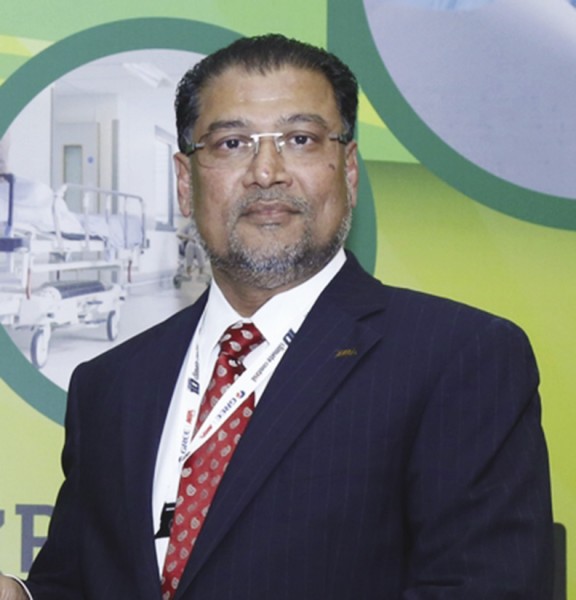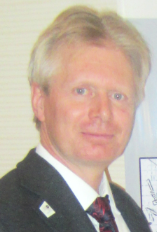Market players say that the world no longer perceives China as a haven for counterfeit products. Through conscious efforts to research and develop new technologies, the HVAC industry in China is already transitioning its image from “made in China” to “innovated in China”.

Image credit: Shutterstock

Zakir Ahmed, Managing Director of NIA Limited
After considering driving forces, like favourable economic development, urban population growth, rising income and a growing retail market, the California-based market research firm, Frost & Sullivan, in 2012, predicted that the total market size in China would be USD 17 billion in 2015, with a compounded annual growth rate of 20%. The firm went on to state that the top three Chinese manufacturers – Haier, Midea and Gree – could supply 50% of the world’s demand for HVAC products. This may be the reason why Zakir Ahmed, the Managing Director of NIA Limited, the exclusive agent for Gree products in the region, refers to China as the “factory of the world”. “Nearly two-thirds of room air conditioners sold worldwide are made in China,” he says.
Raging dragon
There are several factors that drive the raging demand for HVAC products in China. They include rapid economic development and an improvement in the standard of living of people in China, which in turn, have prompted a new wave of building construction. According to a study by Qiu B X (Main barriers and basic policy for promoting energy-saving construction in China, 2007), since 2000, one and a half billion square metres of area of buildings have been built every year, and the trend is projected to continue until 2020.
Andreas Ochsenbauer, the Head of International Sales (District Energies) at Samson, adds: “Population is a driver in China. And air conditioning is the basic need of the people.”

Andreas Ochsenbauer, Head of International Sales (District Energies) at Samson
Ochsenbauer says that although energy efficiency is one of the other driving factors, as is in the case of Europe, in China, the demand is more law- or regulation-driven. The increase in buildings has a direct effect on the national energy consumption, and therefore, the Chinese government has taken energy management into serious consideration. Two laws in China – the Renewable Energy Law and the Energy Saving Law – provide the main guidelines for building energy systems and the HVAC&R industry in China. The Renewable Energy Law was enacted in 2005, and the Energy Saving Law was issued in 2008. Energy saving for air-conditioning systems and refrigerators has been in consideration for many years. “The Chinese government decided to make solar power the cornerstone of their Renewable Energy strategy,” Ahmed says, adding that Gree is a core member of a research driven by the Chinese Central Laboratory to develop innovative solutions for cooling appliances.
Another driver, Ochsenbauer says, is political. He draws attention to the numerous political standards in China, which though driving demand, prove to be a major challenge to interpret.
Obstacle course
Ochsenbauer says that for an outside player, the political standards might be hard to understand. And that following them might be illogical. He cites an example: “In a certain building in a region, they decreed that only hand wells must be used, because there was a manufacturer who sold them. This was politically motivated.” Adding to the woe, he says, was the fact that such standards are written in Chinese.
Yet another challenge, Ochsenbauer says, has to do with finding skilled people in the industry. The lack of adequate skilled people might be owing to a lack of proper education, he deduces.
The Yin and Yang of HVAC business
So how do HVAC manufacturers thrive despite such political and resource challenges? Ochsenbauer says it’s something that the Chinese refer to as “guanxi” – a word that describes the basic dynamic in personalised networks of influence and is a central idea in Chinese society. “They operate very locally, and they have local connections,” he says. “There is a certain tacit understanding and influence amongst the people. Replicating this idea elsewhere is difficult.”
However, no matter how much of “guanxi” or “connections” you have, there still persists a lingering issue, and that is the perception of China being a haven for counterfeiters.
COPY THAT!
China, fairly or unfairly, is associated with counterfeit products. But is the scenario different? Ahmed says: “Undoubtedly, some of the manufacturers are responsible for the manufacture of products under private labels registered elsewhere in their home markets that infringe upon international patents and registration. For example, Super General and General Cool are registered in the UAE, and it can be challenged as an infringement of the world-famous General brand.” He goes on to explain that China has no qualms in manufacturing and supplying a brand as long as it’s registered elsewhere. Although this may be legal in some way, it is unethical. Ochsenbauer presents another facet to the issue when he talks of how, owing to such a perception, some EU companies go to China, manufacture products there and brand them as an EU product. He feels that innovation, for the Chinese, is mostly copying first.
However, he says, Chinese standards are increasing, and this must be taken very seriously. “Earlier we used to make fun of Chinese products, but not anymore, because they have a lot of innovative and high standard products to offer,” he says. “The faster they learn, the costlier their products become.” He believes that the whole counterfeit issue was a problem and a perception 10 years ago.
With increasing awareness on the importance of R&D, the Chinese industry, organisations and universities have promoted the development of and even pushed for in-depth research in the realm of HVAC products. This is slowly changing the perspective in the HVAC domain from “made in China” to “developed or innovated in China”.
Dragon 2.0

Moan Abraham, General Manager at Hisense
Water-source VRF units are well-entrenched in China, industry insider reveals…
At the 3rd Annual Middle East Variable Refrigerant Flow Conference, in March 2015 in Dubai, George Berbari, the CEO of DC PRO Engineering, boldly predicted that by 2020, VRFs would be phased out and that VRW (variable water flow) systems would take their place. To this, Moan Abraham, the General Manager (Air-Conditioners), at Hisense Middle East, responded by saying that water-source VRF systems were already in use in China, and that the country was way ahead when it came to implementing innovative systems. Elaborating on the technology, Abraham said at the conference that the advantages of using such a system was that it utilised heat from ocean, soil, industrial waste and municipal waste water to realise cooling and heating. One of the case studies he spoke of was on the Pangu Plaza, a famous landmark in Beijing. The whole project, Abraham said, spanned an area of 39,360 square metres and included a seven-star hotel and three residential apartments. The three international apartments, Abraham revealed, received cooling by means of 129 24-HP water-source VRF units.
(The writer is the Features Writer at Climate Control Middle East)
Copyright © 2006-2025 - CPI Industry. All rights reserved.